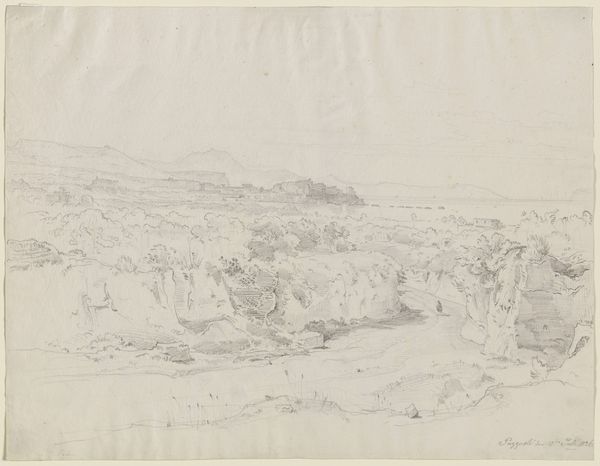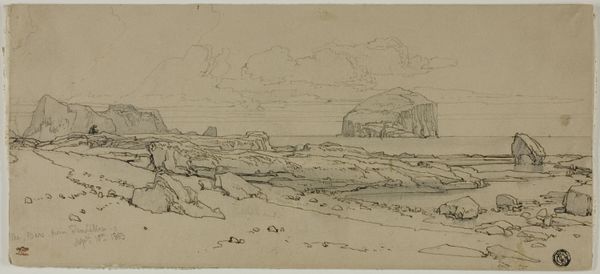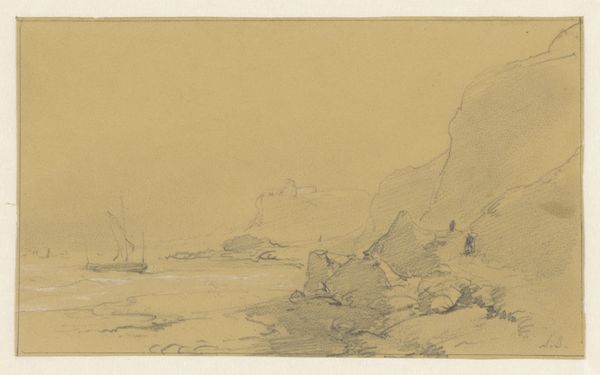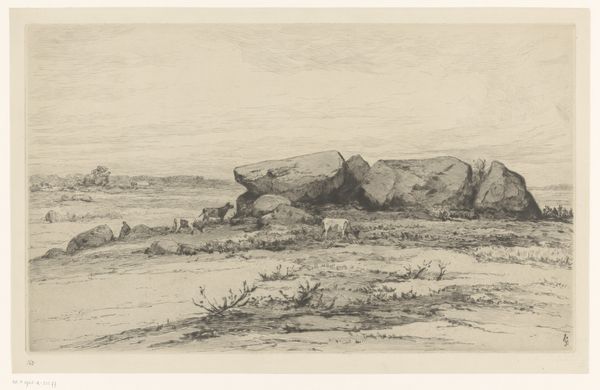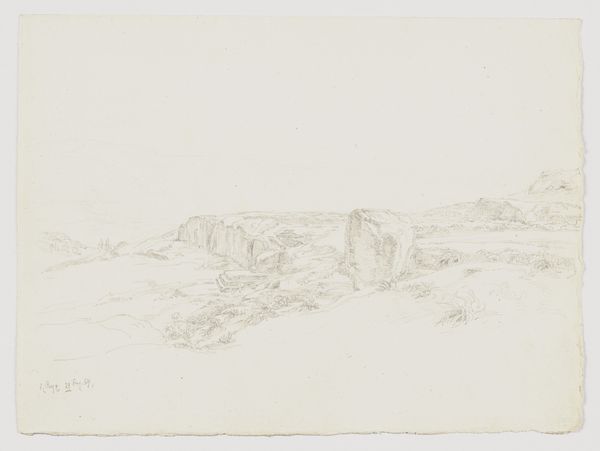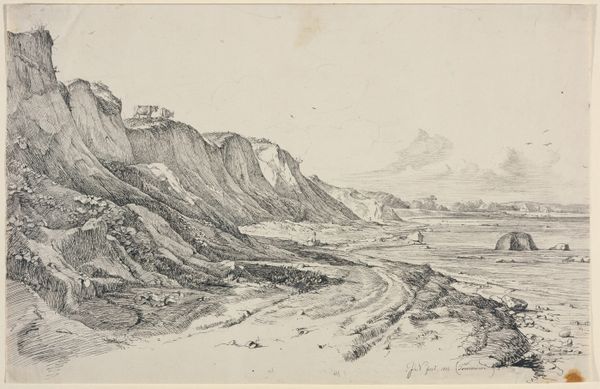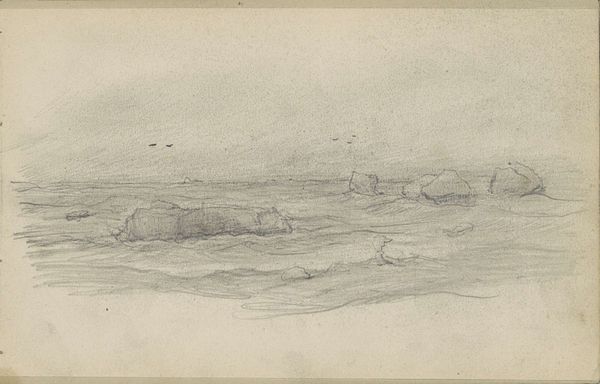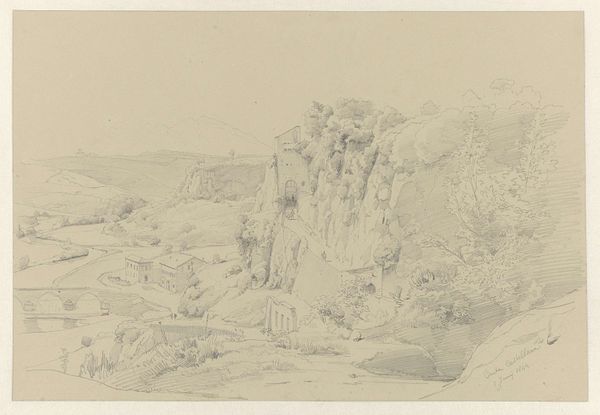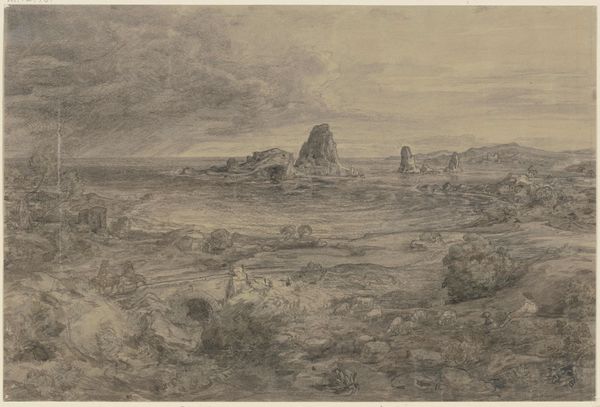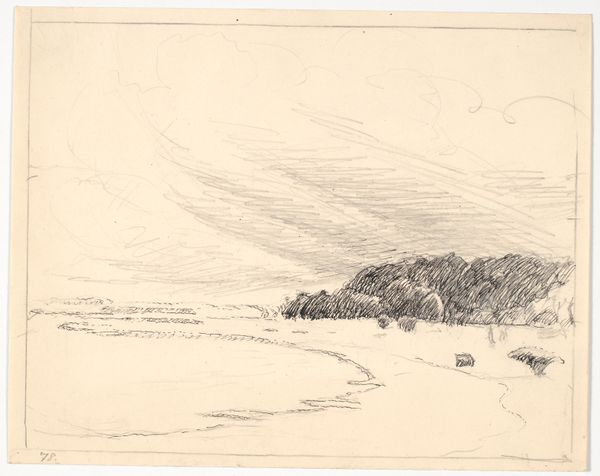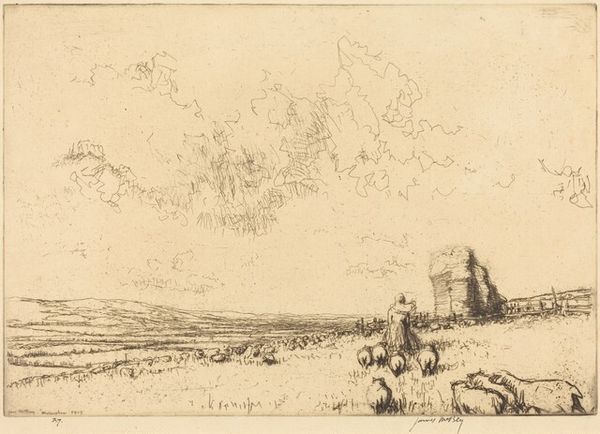
drawing, pencil
#
drawing
#
pencil sketch
#
landscape
#
pencil
#
realism
Dimensions: height 308 mm, width 483 mm
Copyright: Rijks Museum: Open Domain
Pierre Louis Dubourcq created this graphite drawing, "Kustlandschap te Granville," during the mid-19th century. At first glance, it captures the rugged coastline of Granville, a town in Normandy, France. But beyond its picturesque qualities, this drawing reflects a broader shift in artistic sensibilities during the 1800s. With the rise of Romanticism, artists turned to nature as a source of spiritual and emotional inspiration. The art institutions of this period began to champion the individual expression of the artist. Unlike earlier academic traditions that emphasized historical or mythological subjects, artists now found value in representing everyday scenes and landscapes. Dubourcq's choice to depict this coastal scene reveals a growing appreciation for the natural world. To further understand Dubourcq’s intentions, we might consult exhibition records or letters from the period. This drawing invites us to reflect on how artists navigate the changing expectations of their time.
Comments
No comments
Be the first to comment and join the conversation on the ultimate creative platform.
